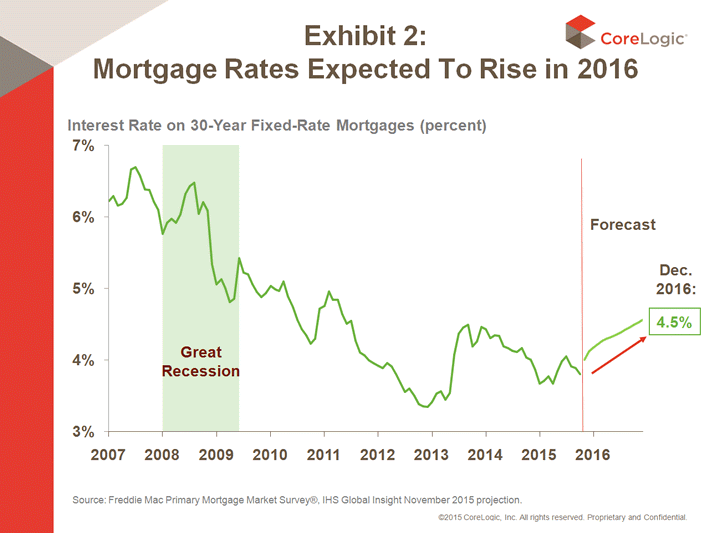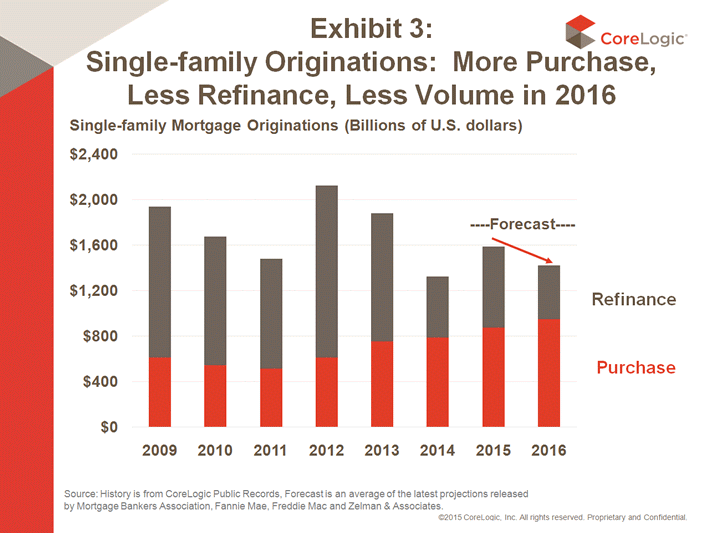Over the next three weeks we will probably be subjected to more housing forecasts for 2016 than ads for Chia Pets. Here is the version provided by Frank Nothaft, senior vice president and chief economist at CoreLogic.
Nothaft presumes, like most in the field, that the Federal Reserve will raise short term rates and predicts that increase will be about one percentage point, achieved gradually, by the end of next year. Homeowners with adjustable rate mortgages or home equity loans can expect to see their payments rise as will people who take on new fixed rate mortgages. The latter will probably rise by about a half-point which will put the 30-year fixed rate mortgage around 4.5 percent by the end of 2016.

Household formation rose significantly this year and Nothaft expects that to continue, adding more than 1.25 million units in 2016 as the labor market improves and the unemployment rate goes down. These new households will increase housing demand which will be especially strong in the rental market. There vacancy rates are at or near the lowest levels in 20 years and rents are already rising faster than inflation.
The rental market may be hot but Nothaft doesn't expect the purchase market to be a slouch either. Overall demand, he says, may left home sales next year to the best since 2007 and prices will continue to rise at a quicker rate than inflation although down from the pace last year. "The CoreLogic Home Price Index showed a year-over-year increase of 6 percent in the last 12 months," he says; "however, 2016 is only expected to see increases of 4-5 percent." The improving sales and rising prices "can be attributed to the improved economy, which has enhanced homeowners' feelings of financial security."
While Nothaft foresees a rise in home equity lending and about a 10 percent increase in purchase mortgage originations, the overall dollar volume of single-family mortgage lending will decline about 10 percent. As rates rise and the pool of borrowers with a strong financial incentive to refinance shrinks he predicts a 34 percent drop in refinancing that will offset growth in the other areas. While single-family originations are expected to fall, multifamily originations will likely rise, he says. "This gain reflects the higher property values and new construction that adds to permanent mortgage usage."

"As we approach the start of 2016, the consensus view among economists is that economic growth will continue, and the U.S. will enter an eighth consecutive year of expansion in the second half of next year. Most forecasts place growth at 2 and 3 percent during 2016, creating enough jobs to exert downward pressure on the national unemployment rate," Nothaft said.







